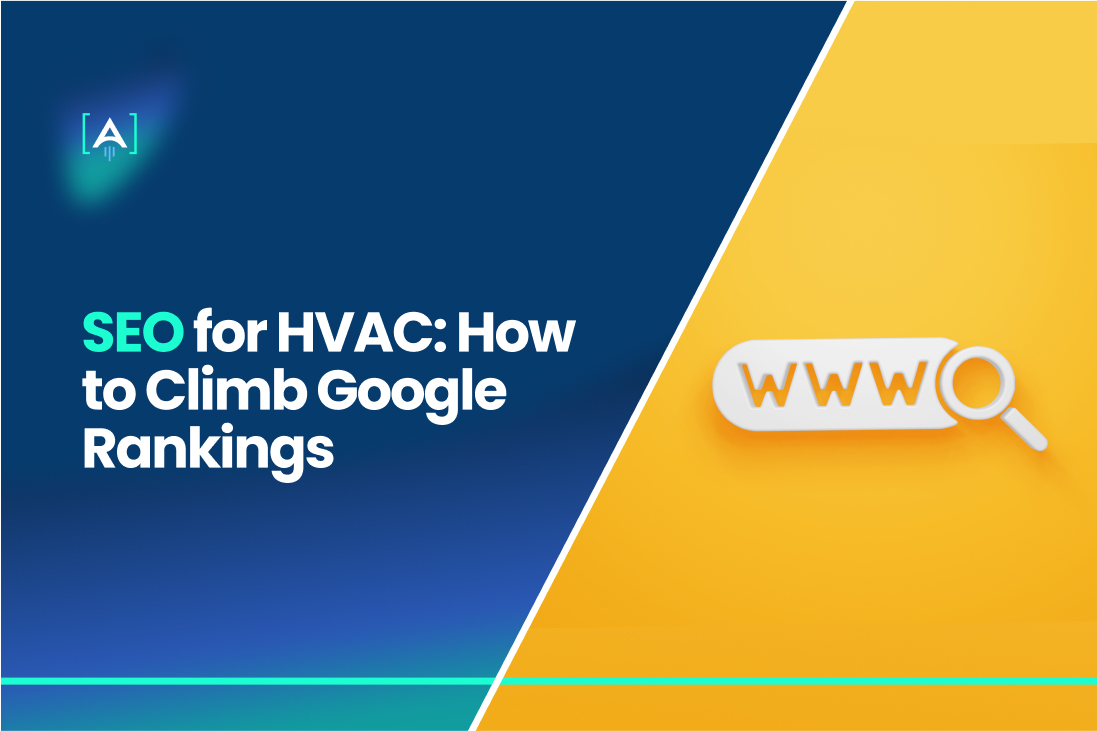Any business growth online without Search Engine Optimization (SEO) services is almost impossible.
The surprising fact is that even customers consider SEO necessary for any brand reputation.
Imagine if it is related to Home Services. That is where the choice starts from.
According to Hubspot, 86% of consumers use search engines to get the required data.
Source: HubSpot
The blog article will highlight the essential SEO strategies and tips to climb the Google Rankings.
What is the Search Engine Optimization or SEO?
Search Engine Optimization or SEO is a fundamental aspect of modern digital marketing, providing significant benefits for both businesses and consumers by enhancing online visibility and accessibility.
People search for products or services related to the business on search engines like Google, Bing, and Yahoo.
SEO services involve various techniques, including keyword research, content creation, link building, and technical optimizations, all aimed at increasing a site’s organic (non-paid) search engine rankings.
The primary goal is to attract more traffic to a website, which can translate into increased leads, sales, and brand awareness.
Businesses apply SEO strategies to achieve higher rankings on search engine results pages (SERPs), as these rankings significantly impact user behavior.
An SEO agency can provide expert guidance and implementation of these strategies to ensure optimal results.
SEO is cost-effective compared to other digital marketing strategie
s like pay-per-click (PPC) advertising, making it a preferred choice for long-term digital marketing plans.
What Are the Rankings Stand For
In Search Engine Optimization (SEO), rankings refer to the position at which a particular webpage appears in the search engine results pages (SERPs) when a user types a query into a search engine like Google, Bing, or Yahoo.
These rankings are crucial because higher positions typically lead to more visibility and increased traffic to a website.
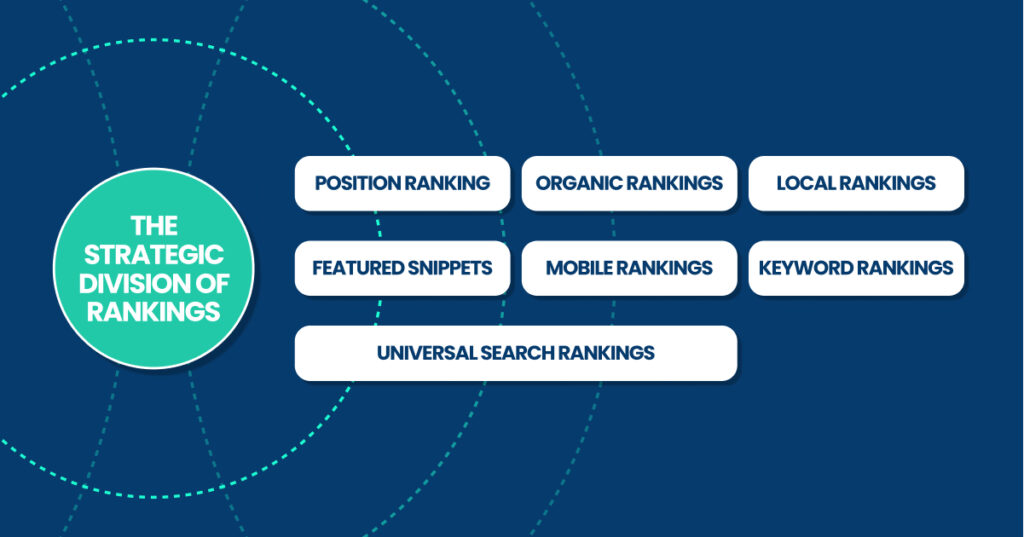
Here’s a detailed look at SEO rankings:
- Position Ranking: This is the specific spot your webpage holds on the SERPs for a given keyword or phrase.
For instance, if your webpage is the first result for “best HVAC services,” your position ranking for that keyword is number one. - Organic Rankings: These are the rankings achieved through non-paid efforts.
Organic rankings are earned by optimizing various aspects of a website, including content quality, keyword usage, backlinks, and technical SEO elements, rather than through paid advertisements. - Local Rankings: These rankings are specific to local searches and are crucial for businesses with a physical presence.
For example, a search for “plumber near me” will return local rankings, showing businesses closest to the searcher’s location. - Featured Snippets: Also known as “position zero,” featured snippets are selected search results that appear at the top of Google’s organic results in a box to provide users with a quick answer to their query. Achieving a featured snippet can drive significant traffic to your site.
- Mobile Rankings: These rankings are specific to searches conducted on mobile devices. With mobile-first indexing, Google primarily uses the mobile version of the content for indexing and ranking.
Ensuring mobile optimization is key to achieving higher mobile rankings. - Universal Search Rankings: These refer to the integration of various types of search results, such as images, videos, news, and local listings, within the organic search results. Optimizing different types of content can help in achieving higher universal search rankings.
- Keyword Rankings: This indicates how well a webpage ranks for specific keywords. Tracking keyword rankings helps in understanding the effectiveness of your SEO strategy and in identifying opportunities for improvement.
HVAC and SEO
In today’s digital age, visibility in search engines is paramount if you own an HVAC company.
That’s where HVAC SEO comes in.
It’s the strategic practice of optimizing your company’s website and online presence to rank higher in search results for relevant keywords.
When potential customers search for “HVAC systems” or “Air Conditioning installation” in their area, you want your HVAC business to appear at the top of the search engine results pages (SERPs).
Effective HVAC SEO involves tactics to ensure your service area is targeted.
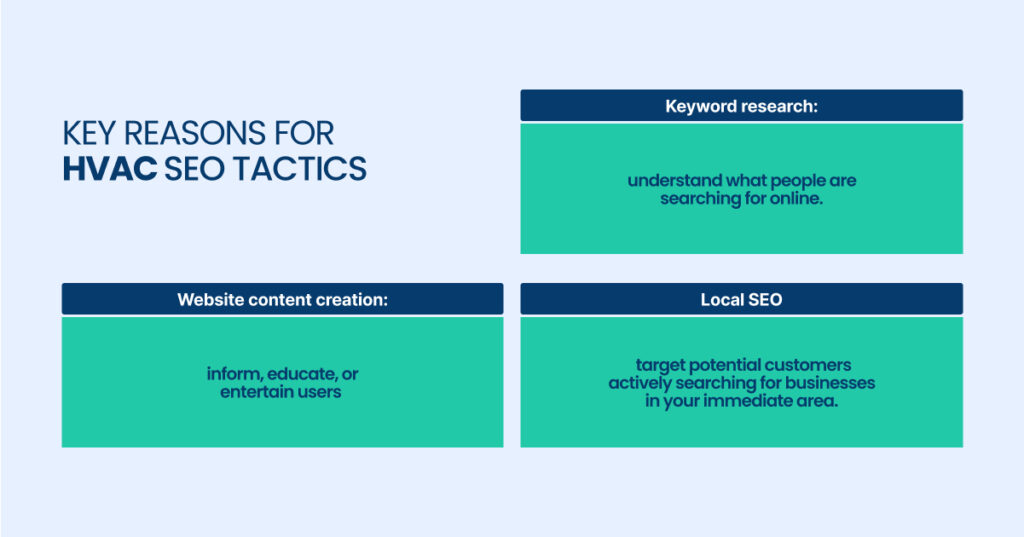
By implementing these strategies, you increase the chances of capturing leads from people actively searching for HVAC services, ultimately driving more business and revenue.
How Google Decides What You See
Google acts like a sophisticated librarian, clearly organizing information and prioritizing the most relevant results for your search query.
How it decides what you see can be understood accordingly:
Firstly, Google constantly crawls and indexes billions of web pages, meticulously storing information about their content.
When you enter a search, Google’s complex algorithms analyze your query, matching it with these indexed pages. They consider hundreds of factors, including the keywords on the page, its overall quality and user-friendliness, and even how other users have interacted with it.
These factors determine a page’s search engine ranking, with the most relevant and valuable pages appearing at the top of your search results.
This ranking system is what drives search engine traffic, directing users to the websites that best meet their needs.
The Key Strategies to Improve the Google Rankings in HVAC
HVAC businesses aim to improve their visibility and attract more customers through online searches and applying to various Home Services options.
In the sense of this, you have to consider 3 essential factors:
Tackle Technical Setup!
The technical setup is crucial for website owners aiming to improve their visibility in Google search results. Ensuring a site is technically sound helps search engines effectively crawl and index pages, which is vital for appearing in relevant search queries.
Key elements include optimizing site speed, using a secure HTTPS connection, and ensuring mobile-friendliness.
Proper technical SEO setup not only improves user experience but also aligns with Google’s best practices, leading to better search rankings and increased visibility.
Navigation and Links?
Website navigation and linking enhance user experience and improve SEO on an HVAC website.
A clear, intuitive navigation structure ensures that visitors can easily find the information they need, whether it’s service details, contact information, or blog posts.
Using descriptive, keyword-rich anchor text for internal links helps guide users to relevant content across multiple URLs, reinforcing the overall site architecture.
Each web page should link to other relevant pages, creating a logical flow and helping search engines understand the relationships between different sections.
For an HVAC website, this means linking from service pages to customer reviews, blog posts, and contact forms, ensuring that both users and search engines can efficiently navigate the site. Properly structured navigation and internal linking boost user engagement and improve the likelihood of higher search rankings.
Simple Url’s Engage
Simple URLs are essential for both user experience and SEO. For users, a clean, easy-to-read URL provides a clear indication of what the web page is about, making it easier to remember and share.
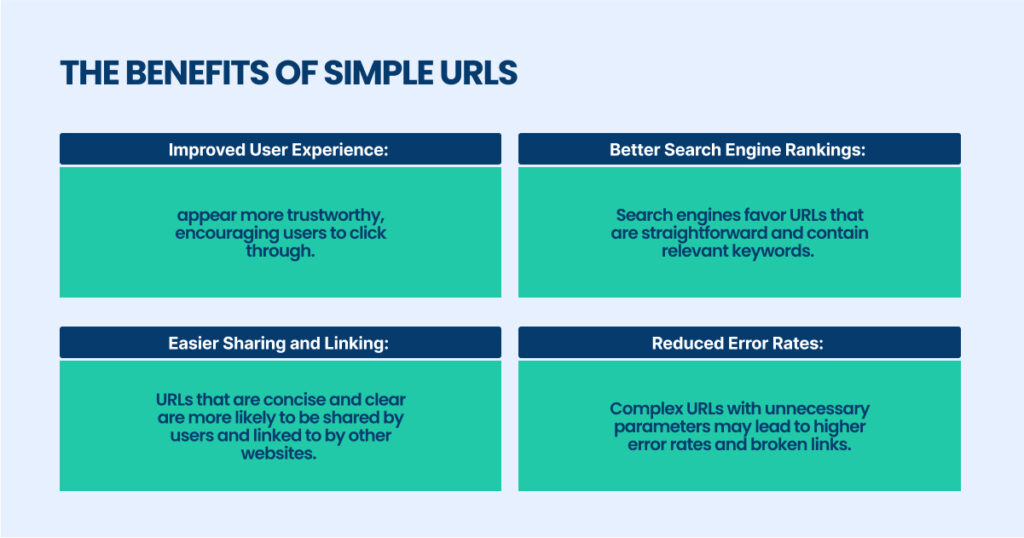
Page Speed Insights
Fast-loading the HVAC system website enhances user experience, reducing bounce rates and increasing conversions.
Ensuring quick access to information about HVAC systems can set businesses apart, leading to higher customer satisfaction and improved search engine rankings.
Google’s Page Speed Insights Tool can be used for better activity.
Repetitive Content
Duplicated content in the HVAC sector can harm SEO efforts, causing search engines to struggle to rank web pages accurately.
Ensuring unique, original content on your HVAC website is crucial for better search engine rankings and providing valuable, distinctive information to your users.
High-Quality Content Creation
High-quality content is a cornerstone of effective SEO strategies in the HVAC industry. Creating content that is informative, engaging, and relevant helps attract and retain website visitors, ultimately driving more traffic and potential customers to your site.
Moreover, Content Marketing Services provide all the relevant aspects.
According to a study by the Content Marketing Institute, 72% of marketers say that content creation is their most effective SEO tactic.
This is because high-quality content not only provides value to your audience but also signals to search engines that your site is authoritative and trustworthy.
When creating a content strategy for an HVAC website, it’s essential to focus on topics that address common questions and concerns of your target audience.
This might include how-to guides on maintaining HVAC systems, troubleshooting tips, or explanations of different HVAC services.
By providing valuable information, you establish your site as a go-to resource, which can lead to increased backlinks from other websites. High-quality backlinks are a significant ranking factor, as they indicate to search engines that your content is valuable and reputable.
Keyword Research
In the world of HVAC SEO, keyword research is your treasure map.
By uncovering the specific hvac keywords people use to search for heating and cooling services, you unlock the key to attracting potential customers.
This involves identifying terms like “furnace repair near me” or “AC installation cost” – the same keywords your ideal customers are using.
On-Page SEO
Effective on-page SEO is essential for enhancing online visibility, driving organic traffic, and converting visitors into customers.
Keyword Optimization
- Title Tags: Craft compelling title tags with primary keywords.
Example: “Reliable HVAC Repair Services – Fast & Affordable.“ - Meta Descriptions: Write engaging meta descriptions that incorporate primary keywords and encourage clicks.
Example: “Need fast HVAC repair? Our certified technicians offer reliable and affordable services. Contact us today!“ - Headings (H1, H2, H3): Use keywords in your headings to structure content and improve readability.
Example: H1 – “Comprehensive HVAC Services”;
H2 – “Professional HVAC Installation“;
H3 – “24/7 Emergency HVAC Repair“ - Content: Distribute keywords throughout your content, ensuring they appear in the first 100 words, in subheadings, and naturally within the text.
- URLs: Create SEO-friendly URLs that include primary keywords.
Meta Tags
Title Tags and Meta Descriptions: Ensure each page has unique title tags and meta descriptions.
These meta tags should be concise & descriptive and include primary keywords to improve click-through rates from search engine results pages (SERPs).
Header Tags (H1, H2, H3): Use header tags to break up content into manageable sections, making it easier for search engines and users to understand the structure and main points of your page.
Include keywords in these headers to enhance relevance and ranking potential.
Based on the above-mentioned steps, you can move further to these:
Relevant Blog Posts
Educational Content: Regularly publish blog posts that educate your audience about HVAC systems, maintenance tips, energy-saving advice, and industry news.
This positions your business as an authority in the HVAC field and can attract organic traffic.
Case Studies and Testimonials: Share success stories and customer testimonials.
Highlight how your services solved specific problems, showcasing your expertise and building trust with potential customers.
Seasonal Content: Create content around seasonal needs and services, such as “Preparing Your HVAC System for Winter” or “Summer HVAC Maintenance Checklist.”
Links
Backlinks, also known as inbound links, are one of the ways to improve SEO and ranking higher on Google.
For home service businesses, leveraging backlinks effectively can significantly boost online visibility and attract more local customers.
Here’s how and why backlinks are essential, along with practical examples and strategies to enhance your backlink profile.
Importance of Backlinks
- Authority and Trustworthiness: Backlinks from reputable websites signal to search engines that your site is trustworthy and authoritative.
This is particularly important for home service businesses aiming to establish credibility in a competitive market. - Improved Rankings: Search engines use backlinks as a major ranking factor.
Websites with high-quality backlinks tend to rank higher in search engine results pages (SERPs), making them more likely to be found by potential customers. - Referral Traffic: Backlinks not only improve SEO but also drive direct referral traffic from other websites. This can lead to an increase in potential customers visiting your site.
Link Building to Acquire High-Quality Backlinks
Guest Blogging:
- Write informative and valuable articles for industry-related blogs and websites. Include a link back to your site in your author bio or within the content.
Example: A plumbing service can contribute articles about “Common Winter Plumbing Problems” to home improvement blogs.
Local Directories and Listings:
- Ensure your business is listed in local directories such as Yelp, Angie’s List, and Google My Business. These platforms often have high domain authority, providing valuable backlinks.
Example: A landscaping company can list its services on local business directories to gain backlinks and increase visibility.
Partnerships with Local Businesses:
- Collaborate with other local businesses to create joint content, like blog posts or guides, and exchange backlinks.
Example: An HVAC company could partner with a local home construction company to create a comprehensive guide on energy-efficient home upgrades.
Content Marketing:
- Create high-quality, shareable content that naturally attracts backlinks. This could include how-to guides, infographics, and industry reports.
Example: A pest control service could publish an in-depth guide on “Seasonal Pest Control Tips” that other websites will link to as a resource.
Social Media and Online Communities:
- Share your content on social media and participate in online communities related to home services. This can generate backlinks from social shares and community mentions.
Example: A home cleaning service can share cleaning hacks on Facebook groups and link back to their website for more detailed content.
Testimonials and Reviews:
- Provide testimonials for products and services you use in your business. Many companies will include a backlink to your site as part of the testimonial.
Example: A home security company could write a review for a supplier’s product, gaining a backlink from the supplier’s website.
Press Releases:
- Distribute press releases about significant business updates or community involvement. News websites and local media often link back to your site. To boost your press release SEO, you can share it on social media and through email marketing.
Example: Announcing a new service area or community event involvement can attract media coverage and backlinks.
Examples of Successful Backlink Strategies
Case Study: ABC Plumbing Services:
- ABC Plumbing implemented a guest blogging strategy and saw a 40% increase in organic traffic within six months.
They contributed articles to home improvement blogs and received high-quality backlinks in return.
Case Study: Green Lawn Landscaping
- By listing their business on local directories and partnering with local nurseries for joint content, Green Lawn Landscaping improved their local search ranking and received a steady flow of referral traffic.
Measuring the Impact of Backlinks
- Use Tools: Tools like Google Analytics, Ahrefs, and SEMrush can help track the number of backlinks, their quality, and the referral traffic they generate.
- Monitor Rankings: Keep an eye on your website’s rankings for key search terms to gauge the effectiveness of your backlink strategy.
- Analyze Traffic: Evaluate the increase in referral traffic from websites linking to your content to understand which strategies are most effective.
Local SEO
Local SEO and correspondent services are the next aspect for HVAC businesses aiming to rank higher on Google and attract more local customers.
By optimizing their online presence for local search, HVAC companies can significantly improve visibility, drive more traffic, and increase leads.
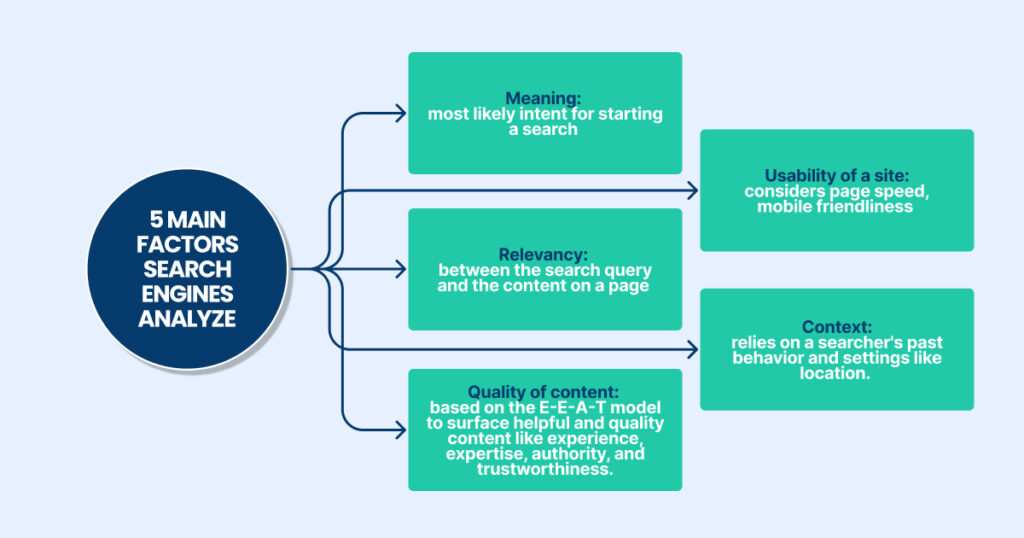
Key Strategies for Effective Local SEO
Google My Business (GMB) Optimization:
Claim and optimize your Google My Business listing by providing accurate information, including your business name, address, phone number, hours of operation, and services offered.
Example: An HVAC company should include keywords like “HVAC repair,” “air conditioning service,” and “furnace installation” in their GMB description to improve local search visibility.
Encourage satisfied customers to leave reviews on your GMB profile to enhance credibility and attract more clients.
Local Keywords and Content:
Use local keywords in your website content, meta descriptions, and title tags. This includes phrases like “HVAC services in [City]” or “Air conditioning repair in [Neighborhood].”
Example: Create blog posts about common HVAC issues in your local area, such as “Top HVAC Problems in Dallas Summers” or “How to Prepare Your HVAC System for Boston Winters.“
Develop location-specific service pages to target different areas within your service region.
NAP Consistency:
Ensure your business’s Name, Address, and Phone number (NAP) are consistent across all online platforms, including your website, social media profiles, and local directories.
Example: An HVAC company should regularly check and update their NAP information on sites like Yelp, Angie’s List, and local Chamber of Commerce directories.
Local Citations and Directories:
List your HVAC business in reputable local and industry-specific directories to build local citations, which help improve your search engine rankings.
Example: Submitting your business to directories like HomeAdvisor, Thumbtack, and the Better Business Bureau can enhance local SEO efforts.
Online Reviews and Reputation Management:
Actively manage and respond to customer reviews on platforms like Google, Yelp, and Facebook. Positive reviews boost your local SEO and build trust with potential customers.
Example: Encourage happy customers to leave reviews by sending follow-up emails or providing incentives, such as discounts on future services.
Mobile Optimization:
Ensure your website is mobile-friendly, as many users search for HVAC services on their smartphones.
Example: Optimize your website design for mobile devices with fast loading times, easy navigation, and clickable phone numbers for direct calls.
Social Media Engagement:
Maintain a strong social media presence by regularly posting updates, engaging with followers, and sharing local content.
Example: An HVAC company can post seasonal maintenance tips, share customer testimonials, and promote special offers on platforms like Facebook and Instagram.
Partner with [A] Growth for HVAC SEO Marketing
Business growth is not an easy process, and success comes when you are with dedicated people.
[A] Growth will assist you in all the stages of your digital progression if you just decide to rely on us.
Our data-driven insights and scalable strategies will develop your industry.
Since our experienced team believes in empowering growth, you will have the opportunity to dig into every single strategic detail and get the unique approaches.
Don’t hesitate!
